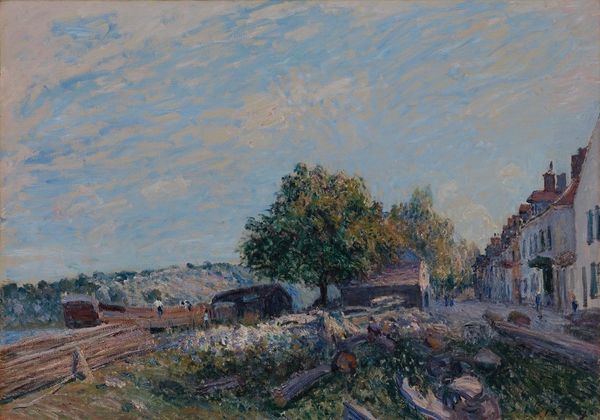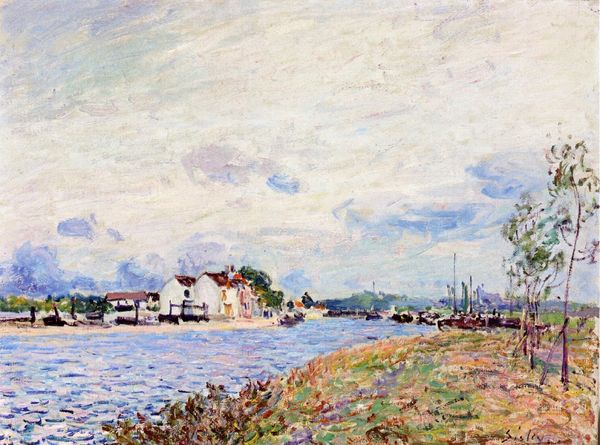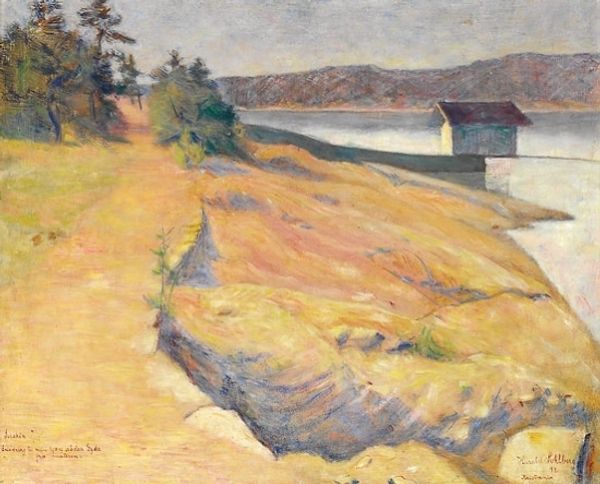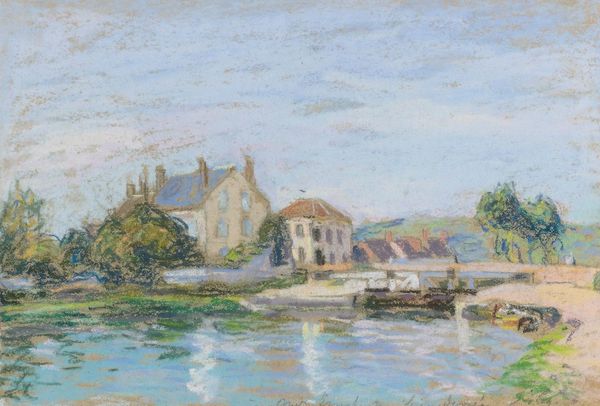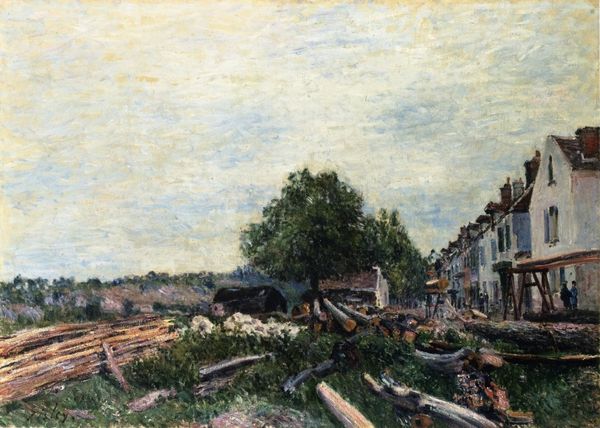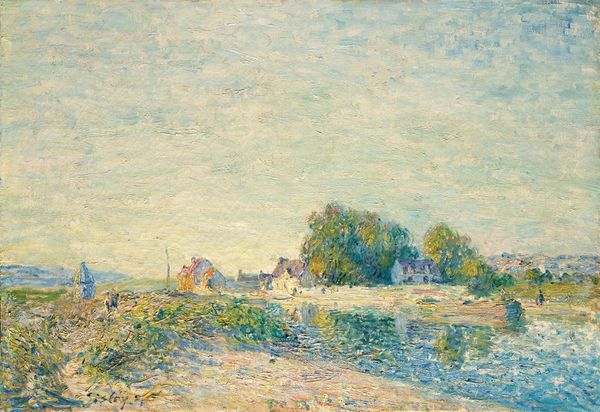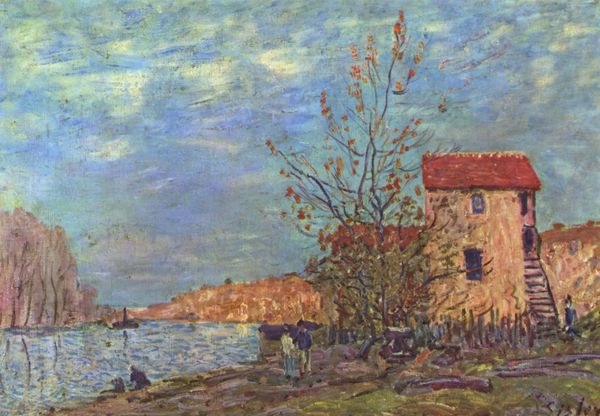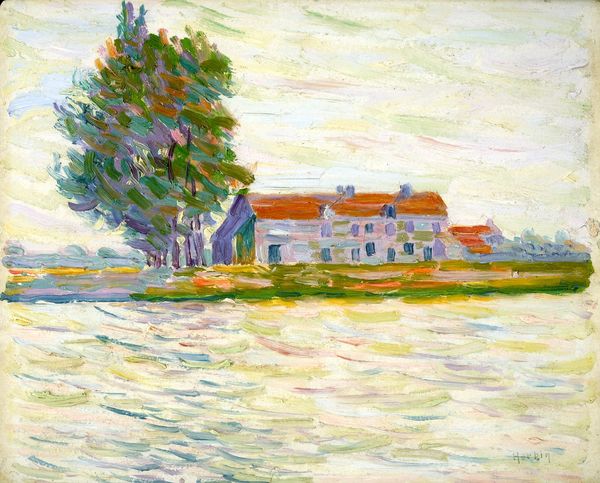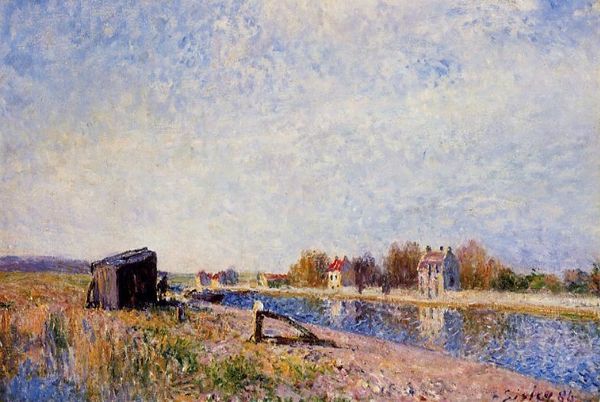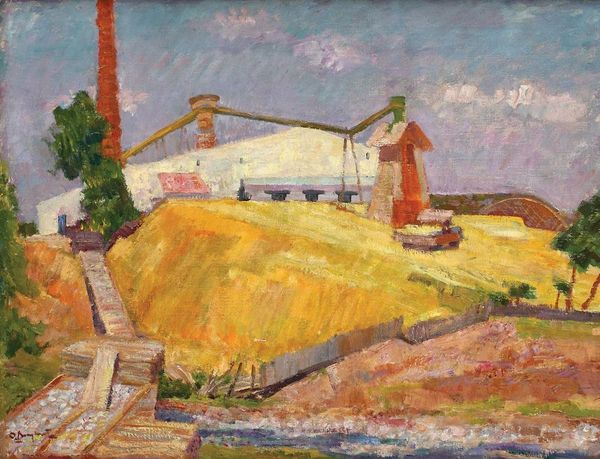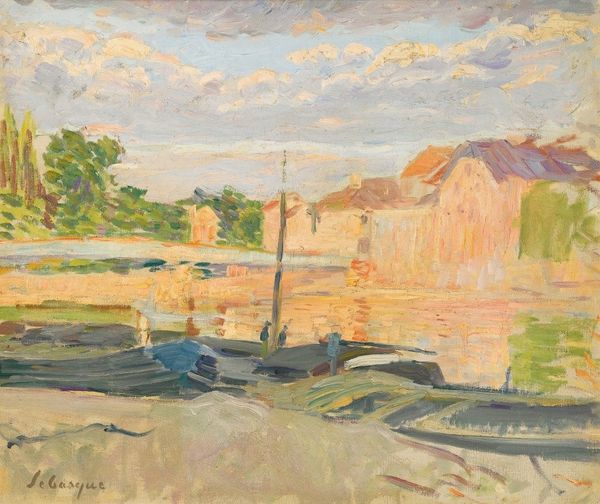
painting, plein-air, oil-paint
#
narrative-art
#
painting
#
impressionism
#
plein-air
#
oil-paint
#
landscape
#
impressionist landscape
#
oil painting
#
cityscape
Dimensions: 54.5 x 73.3 cm
Copyright: Public domain
Editor: Here we have Alfred Sisley’s "Saint Mammes," painted in 1885. It’s an oil on canvas, capturing a scene with a large barn-like building by a river. What strikes me is the way Sisley uses visible brushstrokes to render the scene so directly, almost as a record of his perception. What do you see in this piece? Curator: I see an artist deeply engaged with the process of painting itself, revealing the materiality of the work. Notice how the brushstrokes aren't just descriptive, they actively construct the image, foregrounding the labour involved. The blurring of lines between high art and the working environment also stands out—the barn isn't romanticized; instead, its functional presence questions the hierarchy between subject matter. Editor: That’s fascinating, I hadn't considered the implications of his choice to paint such an ordinary building. How do you see the historical context affecting the work? Curator: Sisley, despite being part of the Impressionist movement, always had a unique touch to his work by drawing buildings without adornment; but were he emphasizing the social context this presented in terms of urbanism's movement? Also, how does his use of oil paints – readily available due to industrial advancements – affect how we view this artistic statement when comparing this to those of medieval murals or even the great Italian artists? Editor: That's interesting; in a way, his art is showing the intersection between labour and landscape! Curator: Exactly! By presenting the processes behind the creation of the work, we also ask who had the power and resources to create "art," at this time of history? In Saint Mammes we see labor embedded within a scene – in production of food, to painting to consumerist means. Editor: This gives me a totally new appreciation for Impressionism in its raw materiality and links to everyday experience. Curator: Absolutely. Thinking about art through the lens of its creation process, materials, and economic background gives the work far more meaning.
Comments
No comments
Be the first to comment and join the conversation on the ultimate creative platform.
